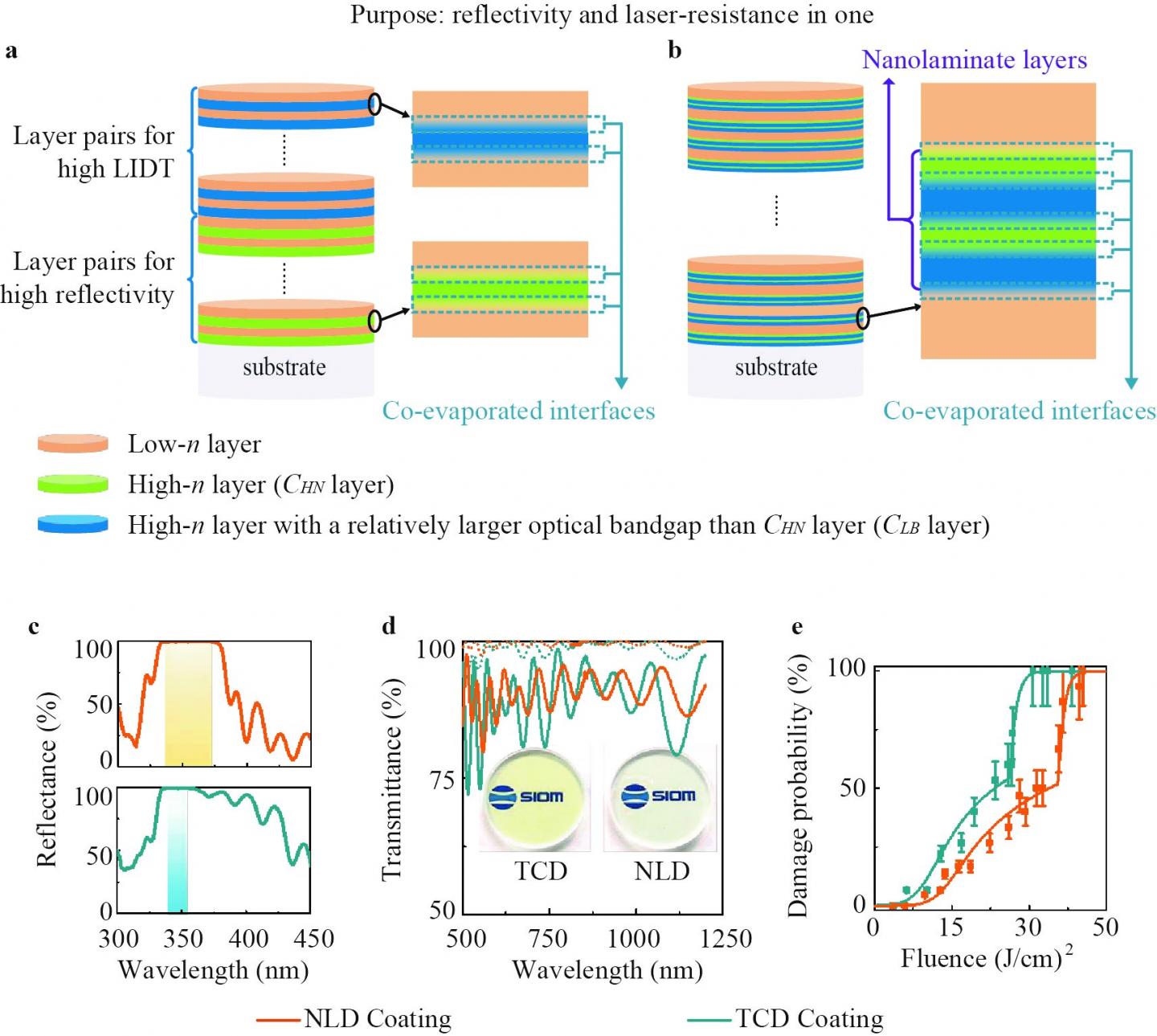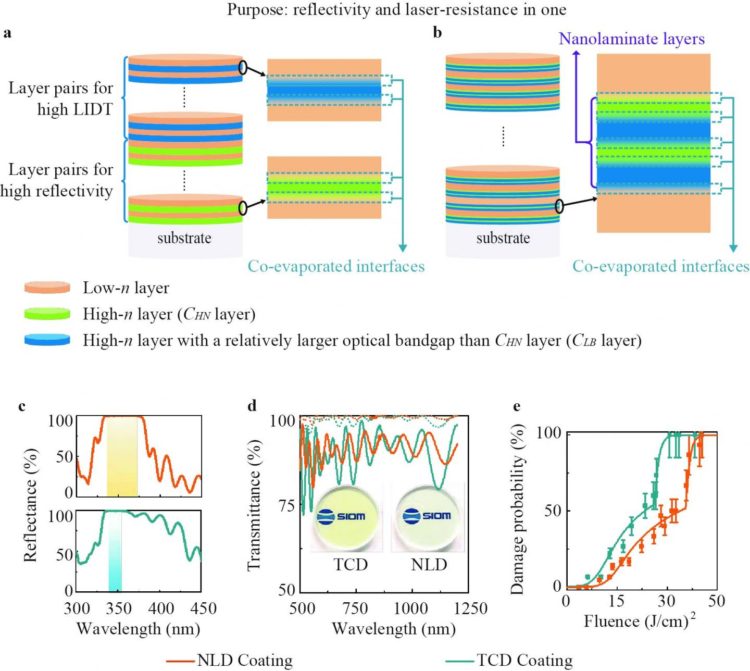
Credit: by Meiping Zhu, Nuo Xu, Behshad Roshanzadeh, S. T. P. Boyd, Wolfgang Rudolph, Yingjie Chai, and Jianda Shao
The demand for laser-resistant mirror coatings is increasing in Inertial Confinement Fusion, Extreme Light Infrastructure and other laser applications. The ideal UV laser mirror (UVLM) coating requires high reflectivity with large bandwidth and high laser-induced damage threshold (LIDT). Unfortunately, these requirements are difficult to satisfy simultaneously. This is due, for example, to the fact that high reflectivity requires high refractive index (n) materials, while higher n materials tend to have a smaller optical bandgap and therefore a lower LIDT. Traditionally, UVLMs were achieved by deposition of laser-resistant layers on high reflective layers. However, compromises are made for the seemingly contradictory requirements.
In a new paper published in Light Science & Application, scientists from the Laboratory of Thin Film Optics, Shanghai Institute of Optics and Fine Mechanics, Chinese Academy of Sciences, China, the Department of Physics and Astronomy, University of New Mexico, USA, and co-workers proposed a “reflectivity and laser-resistance in one” design by using tunable nanolaminate layers (NLD coating). An Al2O3-HfO2 nanolaminate-based mirror coating for UV laser applications was experimentally demonstrated using e-beam deposition. The bandwidth, over which the reflectance is larger than 99.5%, is more than twice that of a traditional “reflectivity bottom and LIDT top” combination design (TCD coating) mirror of comparable overall thickness. The LIDT is increased by a factor of ~1.3 for 7.6 ns pulses at a wavelength of 355 nm. The reported concept resulting in improved performance parameters paves the way toward a new generation of UV coatings for high-power laser applications.
The proposed new structure replaces the high-n materials in the traditional designs with nanolaminate layers. These scientists summarize the principle of their design structure:
“The (average) refractive index and optical bandgap can be tuned by adjusting the thickness ratio of the two materials in the nanolaminate layers, while keeping the total optical thickness constant.” “The proposed method enables UVML coatings with larger high reflectivity bandwidth, higher LIDT and smaller transmission ripples in the VIS-NIR region compared to traditional designs of comparable overall thickness.”
“Compared to the TCD coating, the NLD coating has a lower E-field intensification, a faster E-field decay with depth and smaller absorption, which are consistent with the observed higher LIDT.” they added.
“The e-beam deposited nanolaminate materials can be used for large-size (meter-scale) UVML coatings. We believe that the described concept opens new avenues for improved UV coatings and can benefit many areas of laser technology that rely on high-quality optical coatings.” the scientists forecast.
###
Media Contact
Meiping Zhu
[email protected]
Related Journal Article
http://dx.





